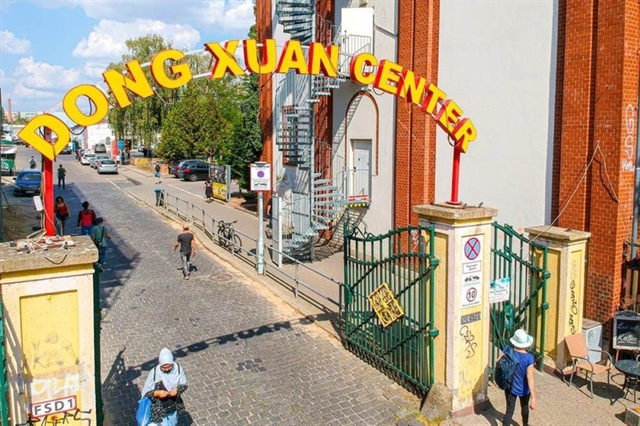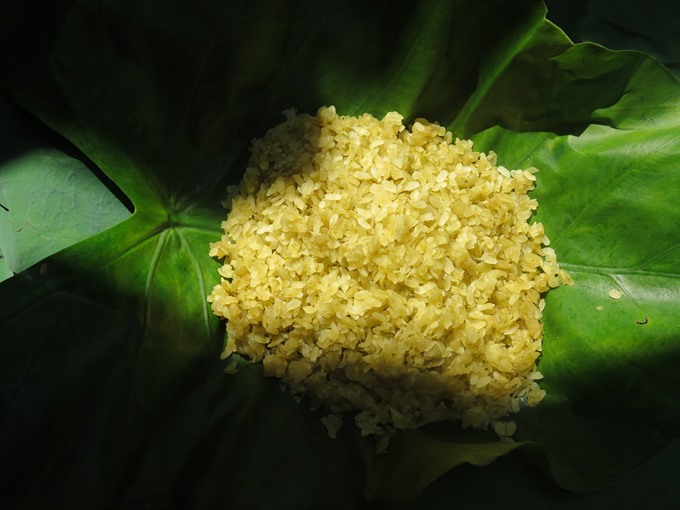 Life & Style
Life & Style

The 2016 Mễ Trì Sticky Rice Flake Culture Day is held today at 1 Đỗ Đức Dục Street, Nam Từ Liêm District, Hà Nội.
 |
| Cốm is one of the delicate specialties of Hanoian. From late September every year, locals of Mễ Trì commune start making cốm from young sticky rice. –VNS Hồng Vân |
HÀ NỘI — The 2016 Mễ Trì Sticky Rice Flake Culture Day was on Sunday at 1 Đỗ Đức Dục Street, Nam Từ Liêm District, Hà Nội.
“The event aims to honour and promote cốm Mễ Trì (sticky rice flakes), one of specialties of the district, said Deputy Chairman of Nam Từ Liêm District’s People’s Committee, Nguyễn Thanh Long.
It features several cốm booths where visitors can buy cốm and its various products including chả cốm (Vietnamese cốm sausage), xôi cốm (sticky rice with cốm), chè cốm (sweet tapioca soup with cốm); a cốm making competition and a small talk which is hosted by Mễ Trì commune leader and two locals who are experienced in making cốm.
“Despite long history of cốm making, locals are facing many difficulties. Among them is the supply of suitable rice to make cốm, limited markets available to consume cốm and the fact that cốm Mễ Trì is yet known widely like other specialties,” said Chairwoman of Mễ Trì commune’s People’s Council, Đỗ Thị Xoan.
As urbanisation led to lack of suitable rice to make rice, locals who used to use locally grown rice now have to import sticky rice from other regions including northern Phú Thọ Province, Bắc Ninh Town, Sóc Sơn District of Hà Nội, said Xoan.
“We hope that the authority pay more attention to the village and make it a better known brand,” said Đỗ Hữu Hùng, a local who has made cốm for years.
There are currently 155 households with more than 600 people making cốm today in Mễ Trì Commune, which accounts for nearly four per cent of village population, according to People’s Committee of Mễ Trì Commune.
Locals produce an average of nearly 600,000 kilograms of cốm with revenue of more than VNĐ75 billion (US$3.4 million). Annual income of a cốm maker is more than VNĐ111million, about 2.5 times higher than average income of Mễ Trì Commune, according to the committee.
Local people first made cốm in early 19th century. In the old days, the village was well-known for its high quality rice, which was praised by a king in Lý dynasty. The king then renamed its original name of Anh Sơn into Mễ Trì Commune, which means Pool of Rice. –VNS




